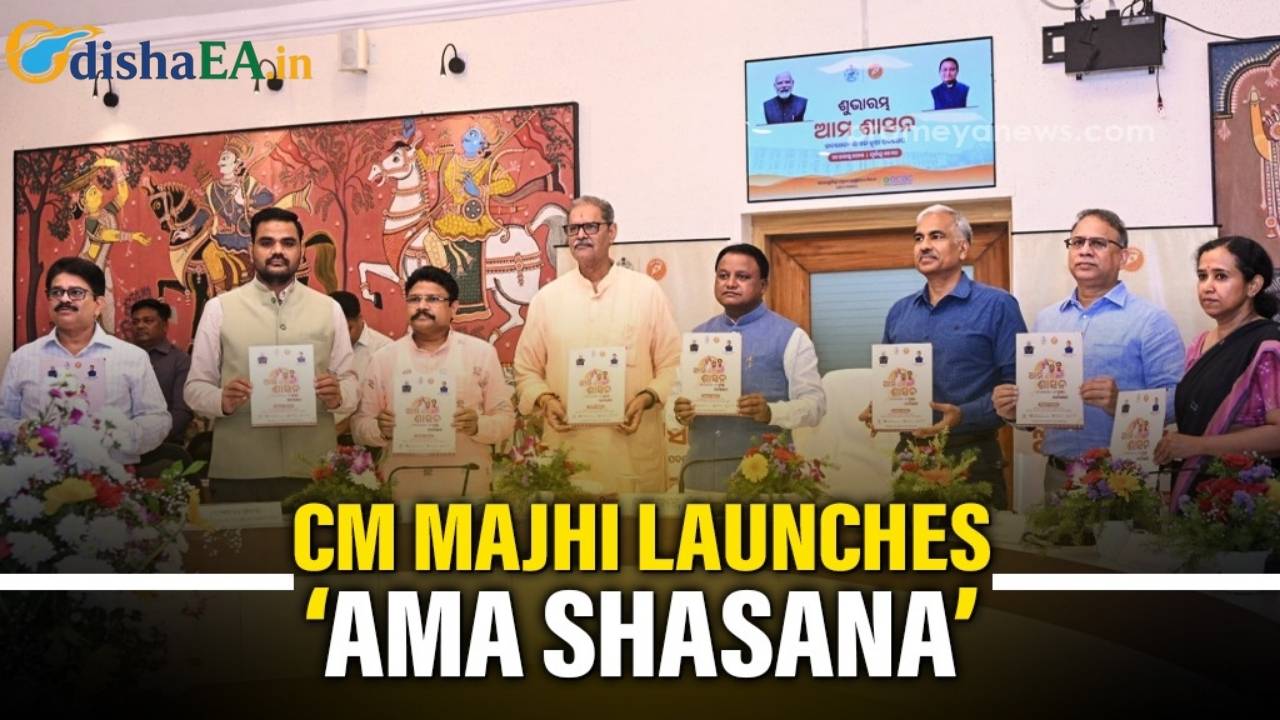In recent years, the state of Odisha, located in eastern India, has taken major strides in preserving its rich cultural and historical heritage. With a multitude of ancient temples, monuments, and archaeological sites, the state has witnessed an increasing focus on ensuring the protection of its cultural legacy. One of the most significant steps in this direction is the announcement of Odisha’s comprehensive Heritage Policy, designed to safeguard over 3,000 monuments and heritage sites across the state. This ambitious policy not only seeks to preserve these invaluable treasures for future generations but also aims to boost tourism and create sustainable development opportunities for local communities.

The proposed policy comes at a time when there is growing awareness about the importance of cultural heritage, not just as a symbol of a region’s history, but as a vital part of its identity and economy. In this article, we’ll break down the details of this Heritage Policy, explore its key features, and explain why it’s a game-changer for Odisha’s future.
Odisha Plans Comprehensive Heritage Policy
| Key Point | Details |
|---|---|
| Policy Goal | Safeguard 3,000+ monuments and heritage sites across Odisha |
| Monuments Focus | Key sites from the 9th century BC, including temples and manuscripts |
| Task Force | Comprising officials from Culture, Law, and Tourism departments |
| Infrastructure Development | Focus on enhancing access, amenities, and safety for tourists |
| Scientific Collaboration | MoUs with IIT Madras and NIWS for advanced preservation techniques |
| Focus Sites | Special attention to Buddhist heritage sites like Ratnagiri, Udaygiri, and Lalitgiri |
| Vision Alignment | Part of Odisha Vision 2036 for cultural preservation and sustainable tourism |
| Official Website for Reference | Odisha Government |
Odisha’s Comprehensive Heritage Policy represents a pivotal moment in the state’s effort to preserve its rich cultural legacy for future generations. By focusing on monument conservation, infrastructure development, scientific collaboration, and the promotion of tourism, the policy not only safeguards the past but also ensures that these treasures contribute to the state’s economic and cultural future.
This policy is a great example of how cultural preservation can go hand-in-hand with sustainable development. By protecting its monuments, Odisha is creating a legacy that will benefit both its people and its visitors for years to come.
Why is the Heritage Policy Important?
Odisha’s Heritage Policy is a monumental effort to protect and promote the state’s vast collection of historical sites. The policy aims to preserve more than 3,000 monuments, including ancient temples, palaces, and archaeological treasures. Many of these sites date back thousands of years, offering a window into the rich cultural history of the region.
But why is this policy so crucial? Here are a few key reasons:
- Preserving Cultural Identity: These monuments and heritage sites aren’t just stones and structures; they represent the heart and soul of Odisha’s identity. They reflect the art, architecture, and spirituality of generations past.
- Sustainable Tourism: By safeguarding these sites, the policy aims to enhance tourism. When managed responsibly, cultural tourism can be a powerful driver of economic growth, generating jobs and fostering local entrepreneurship.
- Educational Value: These monuments serve as living classrooms, offering valuable lessons on history, culture, and religion. Preserving them allows future generations to connect with their heritage and understand the past.
The Key Features of Odisha’s Heritage Policy
1. Monument Conservation and Protection
One of the central goals of the Heritage Policy is the conservation of over 3,000 monuments, many of which date back to the 9th century BC. This vast collection includes temples, forts, palaces, and even ancient manuscripts that have survived the ravages of time.
The policy will prioritize key monuments, such as the temples of Khajuraho and the stunning Buddhist heritage sites in Ratnagiri, Udaygiri, and Lalitgiri. The state government has committed to allocating resources for the restoration and maintenance of these sites, ensuring that they remain intact for future generations.
2. Infrastructure Development for Heritage Sites
To improve access to these historical treasures, the Heritage Policy outlines plans for major infrastructure development. This includes enhancing access roads, creating visitor amenities such as rest areas, and ensuring the safety and accessibility of sites for tourists with disabilities.
This focus on infrastructure is crucial for making these sites more accessible, both for locals and international visitors. By improving roads and facilities, the government hopes to increase tourist traffic, which will boost local economies while ensuring the preservation of these sites.
3. Scientific Collaboration for Monument Preservation
The Odisha government has partnered with leading institutions like IIT Madras and the National Institute of Water Sports (NIWS) to employ cutting-edge technology in the preservation of these monuments. This collaboration will focus on structural audits, advanced restoration techniques, and the application of scientific methods to assess the condition of the monuments.
By using state-of-the-art technology, Odisha is setting a benchmark for monument conservation in India. This approach ensures that heritage sites are not only preserved but are also maintained in the best possible condition.
4. Promoting Odisha’s Buddhist Heritage
Odisha is home to some of the most important Buddhist heritage sites in the world. Locations like Ratnagiri, Udaygiri, Lalitgiri, and Dhauli are not just archaeological sites but spiritual hubs that attract pilgrims and tourists from around the globe.
As part of the Heritage Policy, special attention will be given to promoting Odisha’s Buddhist heritage. The Light of Buddhadharma Foundation International (LBDFI) will collaborate with the Culture Department to develop programs and initiatives to raise awareness about these sites and their significance in the global Buddhist community.
5. Task Force for Effective Implementation
A dedicated task force will be set up to oversee the implementation of the Heritage Policy. This task force will consist of officials from the Culture, Law, and Tourism departments, who will work together to ensure that the policy is executed efficiently and effectively.
This collaborative approach ensures that all aspects of heritage conservation, from legal protection to tourism development, are addressed in a holistic manner.
How Will This Policy Impact Local Communities?
The implementation of this Heritage Policy will have a profound impact on local communities in Odisha. By investing in infrastructure and promoting cultural tourism, the policy will create jobs, stimulate local economies, and provide opportunities for small businesses to thrive.
Moreover, the policy encourages local communities to take an active role in heritage conservation. By involving locals in tourism and preservation efforts, the government is fostering a sense of pride in their heritage, which will ensure long-term sustainability.
Examples of Local Impact:
- Job Creation: Local guides, artisans, and businesses will see an uptick in demand due to increased tourism to heritage sites.
- Educational Initiatives: Locals will have access to training programs on monument conservation, creating a workforce skilled in heritage preservation.
- Cultural Festivals: The policy may also include the development of cultural festivals, which will help raise awareness of Odisha’s heritage while providing a platform for local artists and performers.
Odisha Empowers Local Bodies with Food Policy Control, Boosts Farmer Support & Tweaks GST.
Cuttack Administration Enforces ‘No Attendance, No Pay’ Policy on Mahanga Officials
FAQs
What is the Heritage Policy of Odisha?
The Heritage Policy of Odisha is an initiative by the state government to safeguard over 3,000 historical monuments and cultural sites across the state. The policy focuses on the restoration and conservation of these sites, improving infrastructure, and promoting tourism.
How does this policy help local communities?
By focusing on tourism development and providing local job opportunities, the policy supports economic growth. It also encourages community participation in heritage preservation, fostering pride and awareness of the cultural significance of local monuments.
What are some of the key monuments included in the policy?
The policy includes over 3,000 monuments, including significant sites like the temples of Khajuraho and important Buddhist heritage locations such as Ratnagiri, Udaygiri, and Lalitgiri.
How will the state government preserve these monuments?
The state government plans to partner with scientific institutions, such as IIT Madras, to use advanced techniques for the preservation of these monuments. This includes structural audits, restoration methods, and the application of modern technology.






